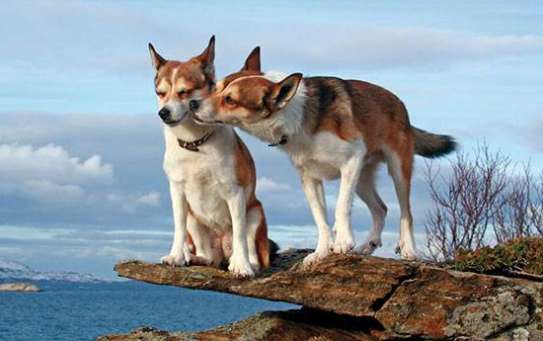The Norwegian Lunde Hound, which originated in the 16th century, is a small and agile dog with many unique features, such as the neck can rotate 180 degrees It can raise its head so that its forehead touches its back; it can stretch its limbs and lie on its belly on the ground, etc. These are difficult for other dog breeds to do.
However, due to the small birth rate of Norwegian Lunde Hounds (female dogs can only give birth to 1 to 2 puppies per litter), canine fever (an incurable and fatal disease ) and a series of factors, this dog breed is rare in number, so it is rare and expensive, and the price is as high as more than 10,000 yuan. If you want to buy a Norwegian Lunde Hound as a companion dog, you must think carefully about it and master this selection guide before buying.

1. Look at the body shape
Height: 31~39 cm
Weight: 5~6 kg
2. Look at the head
The head is wedge-shaped, long, neat, and well-shaped. The head should have sufficient size and strength. The impression of skull and muzzle is that of "cast as one piece", consisting of a fairly flat, medium-width skull, with flat, clean cheeks, combined with a long, strong, deep muzzle (under, between, and between the eyes). The eyes are very plump). Viewed from above, the muzzle is consistent in length and width with the head.
3. Look at the eyes
The eyes are deep-set and beautiful brown eyes. Eyes of other colors are considered defects.
4. Look at the nose
It is big and the nostrils are open. The nose is black on a black Norwegian Lundhund and brown on a liver-colored Norwegian Lundhund. Otherwise, it is a fault.
5. Look at the ears
The ears are upright and the ear cartilage can be folded. If the ears cannot be folded, it is not a purebred Norwegian Lunde Hound.
6. Look at the bite
A scissor bite is preferred, while a pincer bite is also acceptable. Broken teeth are not considered a defect.
7. Look at the tail
The tail is quite straight and well-positioned, with the tailbone extending approximately to the hock. When the Norwegian Lunde Hound is in motion, the tail should be carried cheerfully, but should not be curled, but should extend smoothly toward the topline and never be carried higher than the back.
8. Look at the soles of the feet
The Norwegian Lunde Hound has auxiliary toes on its front paws, so it has five toes, not the same as other dogs. Four toes. The feet have unusually large pads and two dangling toes. This structure makes it easier for the Norwegian Lunde Hound, which once hunted puffins, to climb cliffs and crawl through rock crevices.
10. Look at the coat
The coat is straight and lying flat. A slightly wavy coat is permitted, but the coat must not be curly, woolly, short, silky or shaggy.
11. Depends on personality
The Norwegian Lunde Hound is a multi-purpose working dog that responds positively, loves family members, is versatile, intelligent, Cheerful, easily satisfied, confident, and likes to go out, the wagging tail shows its lively character. Norwegian Lunde Hounds that are neurotic, overly excited, aloof, shy, and stubborn are not recommended for selection. A Norwegian Lunde Hound that exhibits unprovoked aggressive tendencies towards people or other animals is to be severely penalized.
The above is the sharing of the Norwegian Lunde Hound selection guide. Friends, you must get it carefully before buying, so that you can choose the Norwegian Lunde Hound you like.